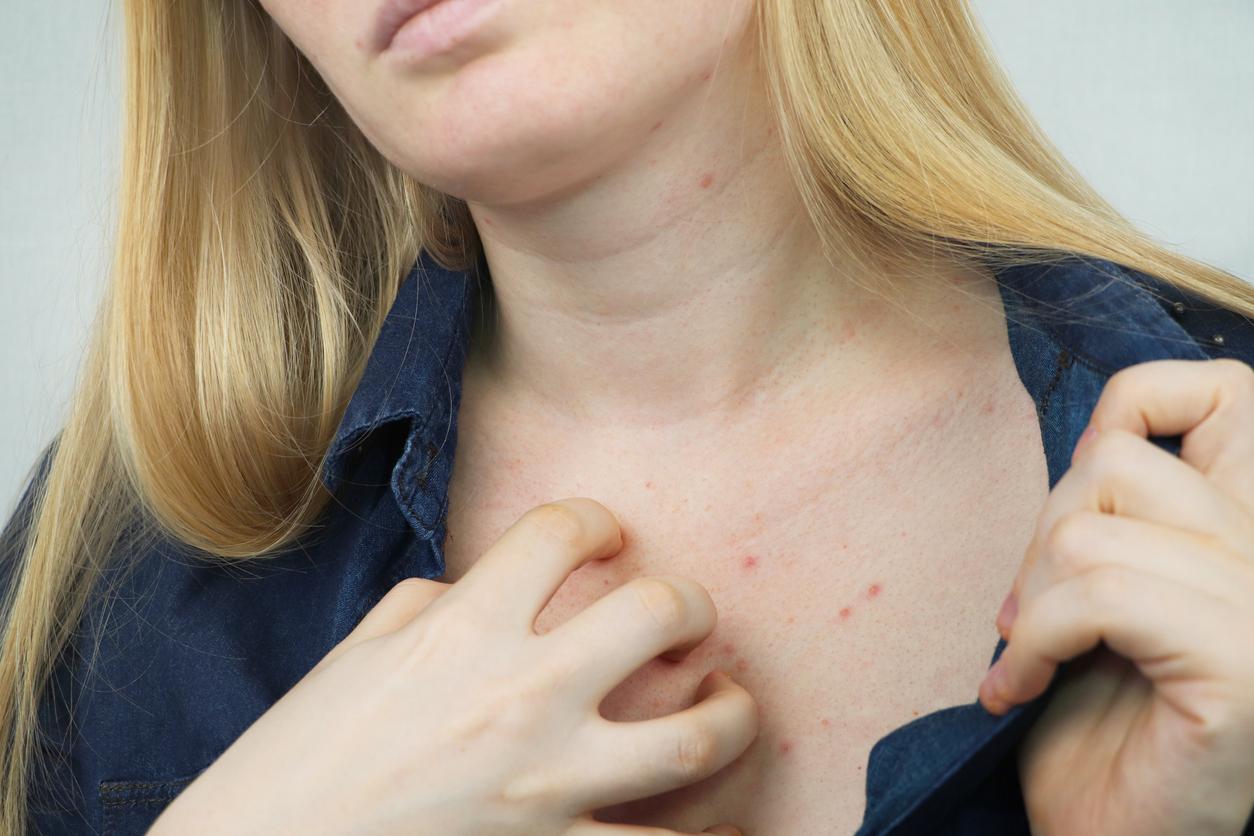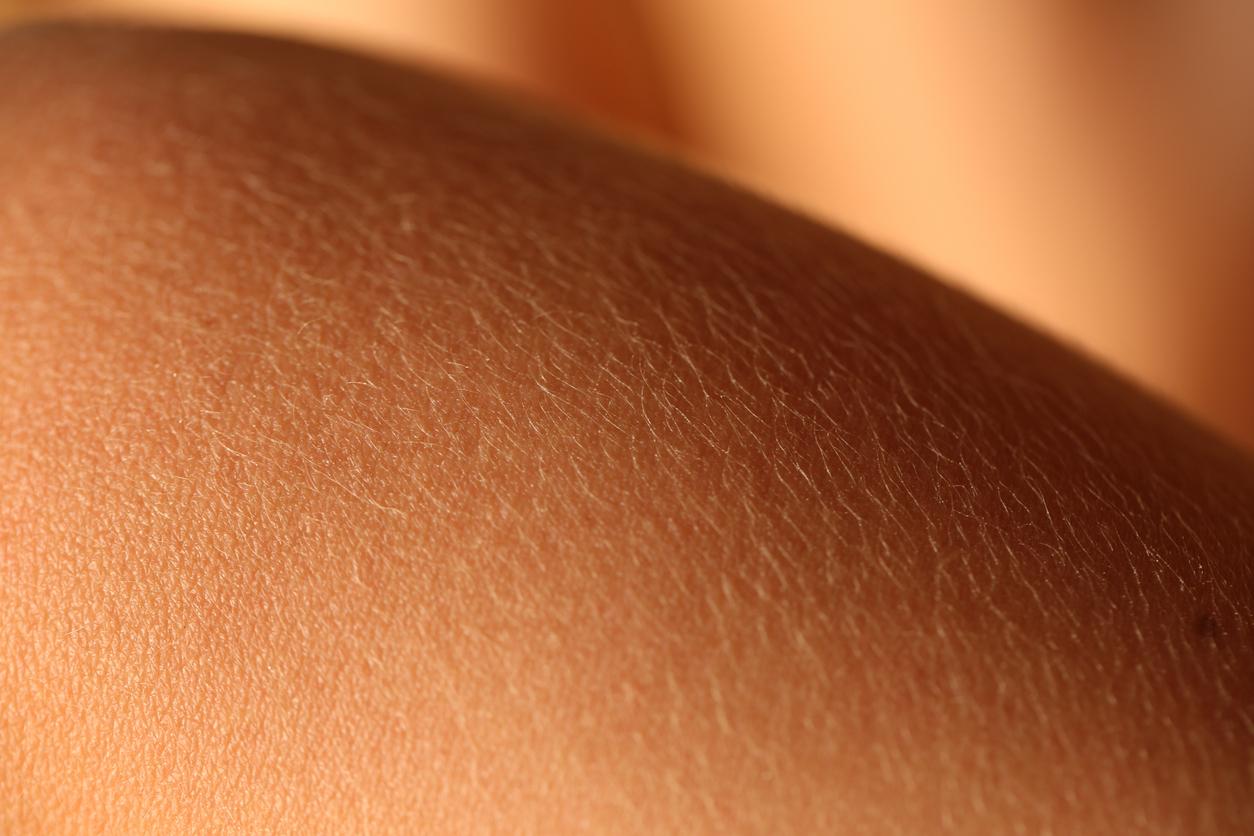They are nearly a million in France to be victims of this disorder which consists in crushing the skin. To remove all imperfections but leaving often lasting marks. It has a name, it’s dermatillomania. Alexandra Lecart, clinical psychologist, at the origin of the identification of this disorder, has just dedicated a book to it: “Stop scratching yourself!”*. She answers the questions of Why Doctor.

– Why Doctor: You have just published “Stop scratching yourself!”, a book that talks about a disease that is little known even if it is quite common, dermatillomania, of which you have become a specialist. How did you identify this disorder and what is it?
Alexandra Lecart : I had just opened my practice in 2009 and a patient told me about her skin crushing problems and I didn’t really know what she was talking about! It was a disorder that was not listed but nevertheless many people suffered from it.
Dermatillomania has only been classified as a disorder that is part of OCD since 2013 in the international classification of pathologies which is the DSM. It could be more of a behavioral addiction.
This disorder affects 1.4% of the world’s population and in France it is estimated that nearly one million people, three-quarters of them women, are dermatillomaniacs. These are figures roughly equivalent to those of anorexia nervosa.
– But concretely, how does this manifest itself?
It is a disorder that consists in checking the condition of your skin every day, to see if it is smooth, if there are no small pimples or irregular aspects and if it is the case, the person really wants to tear off with the nails the small surfaces that protrude or to pierce with his fingers or any instrument to bring out the impurities.
The problem with this Toc is that the person can’t stop doing it, so they do it every day or at least several times a week, and they don’t do it for a few minutes but they can go through it. up to several hours.
– When can this disorder occur?
Usually it happens in adolescence, but like many disorders, because it is an age where there is a focus on appearance, self-image. But it can happen at any age and it’s a chronic illness since the person maintains these imperfections which have become scabs. Sometimes it becomes infected leaving scars and dermatillomaniacs believe that touching these marks permanently will end up removing them, that is to say that we are in a vicious circle.
It should be emphasized that in most cases there is no acne at the base. And that has nothing to do either with the disorders that lead to scarification because their goal, then, is to hurt themselves and this is not at all the case with dematillomaniacs.
– What are the causes of this disorder?
It’s quite difficult to determine but we know that they are generally quite perfectionist, stressed, anxious people who have trouble regulating their emotions on a daily basis.
– Exactly, is there a dermatillomaniac profile?
There is the perfectionist profile, the need to evacuate internal tensions. They are often people who don’t talk a lot about themselves, introverted, sometimes HPI, gifted, the shy ones. There is anxiety, trauma, moral or physical intrusions – which represents about 50% of my patients – there are also all the repressions, taboos, family secrets. It’s really the metaphor of something that is hidden and that must not reappear hence the obsession to attack all the imperfections of the skin.
But as soon as you touch the skin, it reacts and it gives self-perpetuating lesions and after a while the unsightly little pore becomes a scar the size of a coin! After the epidermis, it is the dermis that ends up being affected and the skin never regains its initial appearance.
Patients can’t come out, knowing that you are ugly because of yourself, it puts you in an incredible state of guilt. In fact they make themselves unpresentable, they ruin their social relations. I have patients who lock themselves at home and live in the illusion that one day they will be able to stop crushing themselves and that their skin will return to normal. There are even some who do not go to see a doctor so as not to have to show their bodies. Dermatillomaniacs are the kings of camouflage. There’s makeup, there’s clothes to hide other areas of the body, you’ll never see it in a bathing suit.
– The day of a dermatillomaniac, how is it going?
Generally, it starts in the morning… with leftovers from the night before! The person touches his skin to identify all the imperfections, most often on the face but it can concern the scalp, the neck, the torso, the belly, the legs and these zones can accumulate. So the day begins with crushing the crusts from the day before either in the bathroom or in the toilet, a closed place where the person is not likely to be disturbed. But dermatillomaniacs sometimes avoid touching themselves too much in the morning because they know that they will have to be presentable during the day and the skin takes several hours before resuming its normal appearance when it has been triturated.
Then the toilet or the shower gives the illusion that the water will heal all that.
During the day, these people are deprived of crushing and identify the points on which they will be able to intervene on returning home and remove everything that displeases them. It is in this that it is a Toc since the gestures are prepared and the ritual organized.
– How does crushing the skin in this way relieve?
It relieves because there are nerve endings and in fact it has the effect of a little massage even if the person does not realize it. Removing something from his body also relieves.
And then there is the perfectionist desire that is satisfied. But above all the person enters a state of semi-consciousness, loses track of time, which means that they can thus spend hours crushing their skin without realizing it.
– Does it give pleasure?
Yes quite. This is even what would place this disorder in the category of addictions. But crushing isn’t what brings pleasure, it’s only a way to see what displeases and to be able to tear it out, to remove something dirty that is inside oneself. At that moment, it’s a form of ecstasy, of jubilation.
As people are in a state of semi-consciousness, it is only after having stopped crushing themselves that they see the consequences with all these marks on the skin, like a minefield, and there they are shocked. They sink into sadness, depression and to try to hide all this, they take great care to try to make up for what they have done.
– Isn’t their first instinct to consult a dermatologist?
Obviously ! It’s a bit logical. They think it’s my skin so it’s a dermatologist’s problem. And the dermatologists tell them every time ‘stop scratching yourself’ hence the title of my book! But it is really a psycho-dermatological disorder and it is the business of the psychologist.
– But this shrink, should he be specialized in this little known disease?
It is necessary to consult psychologists who are interested in ocd. But as it is actually still little known, some do not know what it is. It’s a phantom disorder! Even the patients are so ashamed that they have managed to make the disorder invisible!
I myself am a psychologist who works in the shadows: in congresses of psychologists, there is nothing on dermatillomania!
– And these psychologists, what treatments can they offer?
There are different types of therapy that are effective, behavioral and cognitive therapy, work on self-image, on managing emotions. Hypnosis can give results but not necessarily in all cases. And then there are all the relaxation techniques that can help overcome this disorder.
The entourage of the dermatillomaniac also has a role to play by making him understand that he is undergoing his disorder, that he is undergoing an impulse and not that he wishes to do so. But to help these people, you have to… let them do it! Pointing out to them that they have failed to control themselves will only heighten their anger at them, their guilt, their shame. So you have to deal with them with a lot of kindness.
* “Stop scratching yourself!”, by Alexandra Lecart, Enrik-B Editions
















